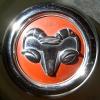-
Posts
6,979 -
Joined
-
Last visited
-
Days Won
74
Content Type
Links Directory
Profiles
Articles
Forums
Downloads
Store
Gallery
Blogs
Events
Everything posted by JBNeal
-
Fuel fouled spark plugs are an obstacle that I ran into in winter months when the flatheads would crank too long. I would remove each spark plug, clean off debris with a brass bristle brush from electrode + tip, spray a 2 second blast of ether down the slightly open carburetor, apply full choke and 1/4 throttle, then crank the starter, with 2 pumps of throttle pedal per second after cranking for 3 seconds if the engine did not fire immediately. If this did not work after 15 seconds, I would repeat this entire procedure once more...after that, I would take a break for a few hours to charge the battery back up to full. Most of the time this worked, the next step was to clean the carburetor to get a dribbling jet to spray properly. Another twist to this procedure is to be in 2 places at the same time with the flathead in the truck. Choke and throttle are set in the cab, key turned on, park brake set. Ether spray nozzle added the tube that comes with most brake cleaner cans. Temporary linkage made from steel rod so that carburetor throttle could be operated from the driver fender area while the starter arm was actuated by hand. Plenty of hand-eye coordination required for this procedure...and it's great fun when it works
-
3 possible locations: between #5 & #6; below carb facing the firewall; below carb facing inner fender...although I have an older intake that has no tapped vacuum port. I see no ports from the picture that you posted of that part of the engine compartment ?
-
I rewired my '48 1/2 ton with 6V connectors back in '96...they look the same as 12V connectors...haven't had a problem with that wiring yet...the biggest problem is splicing new wires onto the original cloth covered wiring, as the old wiring is susceptible to corrosion inside the cloth covering since it does a poor job of sealing out moisture. This causes the original wiring harness to have sky high impedance, and ppl think that converting to 12V is a safe shortcut to having a functional electrical system, but that's a different discussion.
-
Get yourself a can of Pringles..."dispose" of the contents...take the plastic lid and a ball point pen...set the lid over your carburetor opening...apply downward pressure to the lid perimeter by holding with the kung-fu grip...firmly trace the desired inner diameter to cut with a sharp utility knife...trim the desired outer diameter...if'n ya don't like the results, get yourself another can of Pringles and try again
-

Who is using Champion spark Plug J11 and not Champion J8
JBNeal replied to desoto1939's topic in P15-D24 Forum
When I first started my '48 1/2 ton in '96, I used the J8 plugs that were in it for a few thousand miles. Those J8s were made in the early 70s, Dad put them in when he drove the truck til he parked it due to a variety of issues + not having time to work on it in the late 70s or 80s. I replaced them in 2002 with new J8s as those decades old plugs were worn to the nubs, but the new J8s fouled up in a hurry in weather below 60°F. Around 2004, I changed to the Autolite 306, and carbon fouling went away. I did not have the time to figure out what was going on in the flathead, but about the same time, I had a Champion grenade in my '92 John Deere 425 Kawasaki 2cyl, another Champion grenaded in a Troy-Bilt rototiller with a Briggs & Stratton, and had heavy carbon fouling in Grandma's '86 Diplomat. Replaced all those plugs with NGK and AC, and those problems went away. Champion wasTHE spark plug for a very long time, but these quality issues in the early 2000s soured me on them...does Champion make a better plug now? Does compression play a role in carbon fouling? I recall how surprised Dad was when I told him that smooth running flathead I had revived after sitting for 20+ yrs was using the same Champion spark plugs that he put in it before I was born...I do not know if that kind of quality is even possible these days from Champion, as I believe their materials cost cutting to improve profitability has been miscalculated to their reputation's detriment. But if the Champion J8 is made nearly as good now as it was in the early 70s, I would run them again in a heartbeat...cold startups were less than 10 seconds, wear was good, any fouling was serviceable within reason, a good value if the quality has improved. -
Jimbob: [bounces in reverse] B: I like it! J: HEY ? ...and then your co-pilot bails out before ya get the parking brake set ? When I first got the 1-ton rolling after its 4 yr hiatus thanks to that tow truck snafu, the gas pedal pedal would hang up like that...I got pretty good at the driving calisthenics, could even grab the pedal going through a turn while downshifting...then I fixed it after the shifter knob caught me under the chin after hitting a bump in the road ?
-
them heater controls look to be mounted for the passenger's benefit... Horkey has replacement tailgates... DCM has some tailgates...maybe them shiny strips could be dulled with some vinegar or terlet bowl cleaner, they pop too much with the bed sheet metal paint, kinda like the mouthy know-it-all answering questions that nobody asked ? EDIT: maybe pull a strip out and practice on its backside...you can adjust to get the look ya want, then flip it over and treat them all ?
-
additional information - radiator replacement source
-
these reproduction u-joints with the central grease point could work if low profile 90° zerk fittings could be sourced, but those are hard to find these days as well...agreed that it is infuriating to have an online vendor reel ya in with a sale only to say "on back order" when a delivery date is requested. Updating the entire affected driveline is almost the last resort to source the spicer-type u-joints, short of updating to a newer rear axle, but it sure would be nice to find a crate of Cleveland-type crosses coated in cosmoline
-
Not trying to be critical here but shouldn't getting the engine running be a priority? Then fuel delivery, brakes, suspension...after all that is dealt with, then the paint...not fun to make it all look nice then find out that the block is more incontinent than the old sailors home on game night ?
-
I have reached out to VPW several times to verify part numbers with what they have available, also to ask if they had any suggestions on possible alternate vendors when parts were unavailable...they have been knowledgeable and helpful in pointing me in the right direction ?
-
That's one fine looking buggy...that paint job really pops
-
additional information - shock absorber replacement
-
additional information - Vintage Power Wagons steering catalog
-
that should dress up that corner of the engine compartment nicely. The reproduction that I've been working on should address some of the details that are missing here, and I've got a line on getting some samples made in preparation for public consumption...the best thing about this pandemic is that it has allowed getting caught up on some of these smaller projects that have been on the back burner for years ??
-
additional information - Bob's Classic Auto Glass
-
When I corrected the suspension problem on The Blue Bomber, I had to source the correct spacers for its Dana 80 axle...could find nothing used, so I upgraded to a lift block kit from SD Spring that was 3/4" higher than factory but worked. By contrast, the QuadCab uses a 1" spacer block on its Dana 70 rear axle. In both instances, rear axle spacers are only added to level the body, with 4x4 solid axle suspensions needing more clearance than 2wd IFS for Cummins applications; gas engine suspensions were set up different, which was part of the problem I found when I bought The Blue Bomber from a used car dealer in Irving. Newer model Dodge Rams with the Cummins have a different frame and suspension package, so they use a different spacer setup.
-
to clarify, the head casting date is on the head, directly above the distributor. The number above the distributor on the block might be the block part number. If there are no numbers below the distributor, I believe those are pre-war blocks, but not sure when casting dates were added to engine blocks.
-
Another vote for Schumacher...typically, these chargers fail on the peripheral circuits to the main transformer, such as the voltage monitoring circuit. I tinkered with a Die Hard charger years ago, but rebuilding a battery charger is kinda like putting new straw in a broom: a lot of work vs just getting a newer better version off the shelf.
- 7 replies
-
- 6 volt charger
- battery charger repair
-
(and 1 more)
Tagged with:
-
Looks like a 1950 from the bumper guards, column shift, door line...somebody tried to find the SN on the frame too...rearview mirror probably came off of a school bus
-
AFAIK stepside beds were basically constructed the same way: steel crossmembers bolted to the truck frame through wooden flooring and skid strips attached to the crossmembers, steel bedsides and bulkhead attached to the wooden flooring and skirting attached to the running boards, fenders attached to the bedsides and running boards, tailgate attached to bed sill attached to bedsides. Removal is reverse of installation, so it sounds like you are on the right track. additional information - Mar-K general assembly instructions
-
It was not uncommon for engine numbers to be removed by rebuilders, as vehicles were titled by engine number prior to VIN registrations...this was done presumably to prevent duplicate vehicle registrations when rebuilt engines were installed in different vehicles and subsequently sold, creating headaches for state taxing authorities especially when ownership is questioned in a legal proceeding. The fallback on engine identification is block casting date, combustion chamber bore and crankshaft stroke...block casting date is below the distributor; head casting date is above distributor.
-

Exhaust road draft tube and oil filler smokes
JBNeal replied to Haydenh's topic in Technical Archives
The consistent smoke out of the fill pipe + blue smoke out of the exhaust tells me that ya have blowby + oil consumption, which puts that flathead on the parh to a rebuild. Might be leaky valves from worn guides, might be worn rings from use or stuck rings from disuse. Inspection of the internals is warranted... The crank pulley might not be too bad, as long as the hub is true...might just be that the sheave got bent a little somewhere along the way, maybe somebody tried removing with a prybar instead of the proper puller. -
http://www.burtonlnorton.com
-
If ya see something, say something...FB can't crack down on fraud without a little help from ppl who know better ??




